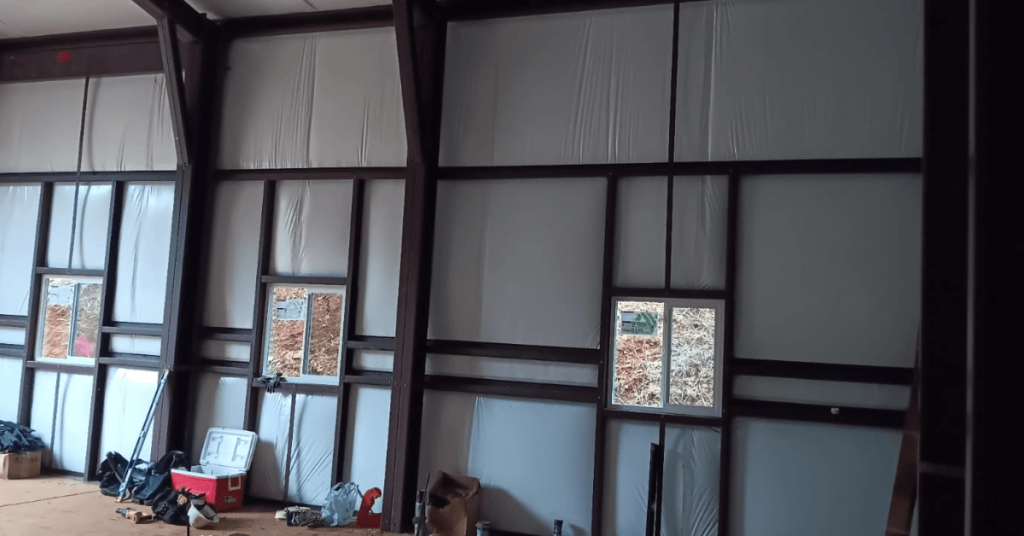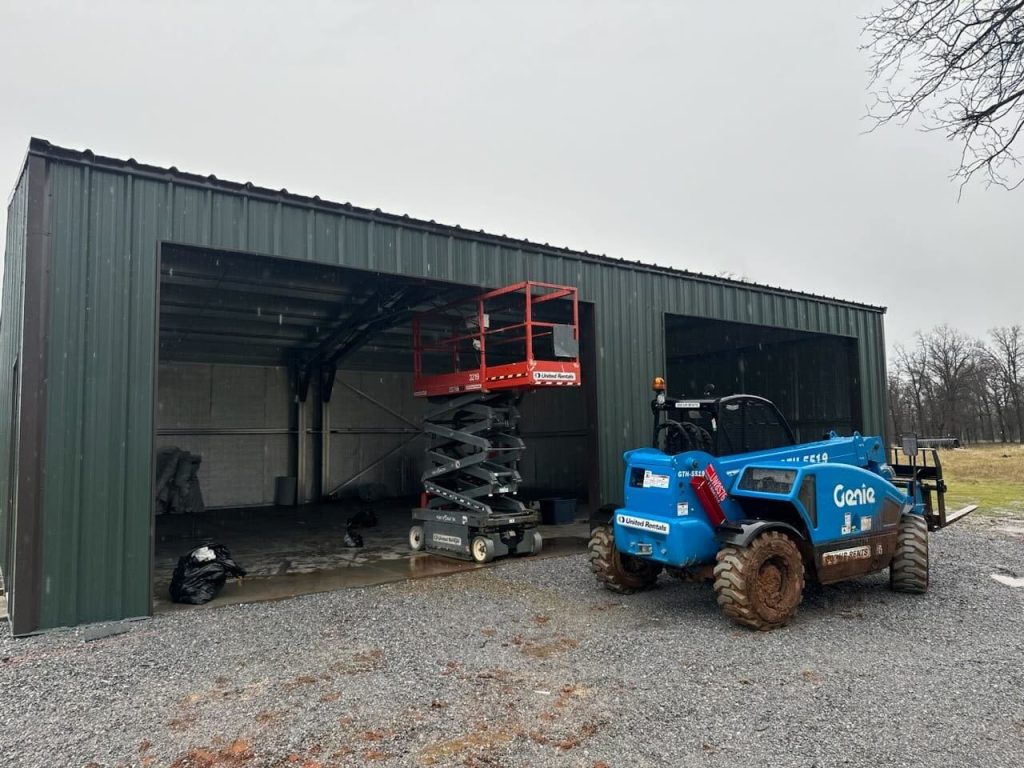Sustainability in Construction: How Steel Buildings Support Eco-Friendly Business Practices

Sustainability is no longer a trend—it’s a necessity for businesses aiming to reduce their carbon footprint and meet growing environmental standards. In the construction industry, where resource consumption and waste production are high, steel buildings offer a sustainable solution that aligns with eco-friendly business practices. As companies look for durable, cost-effective, and environmentally responsible construction options, steel structures are leading the way.
In this blog, we’ll explore the various ways steel buildings promote sustainability, focusing on their energy efficiency, recyclability, minimal waste production, and long-term environmental benefits.
Why Sustainability in Construction Matters
The construction industry is responsible for a significant portion of global greenhouse gas emissions and resource consumption. According to the World Green Building Council, buildings account for nearly 39% of global carbon emissions, with 28% coming from operational emissions (energy needed to heat, cool, and power them) and 11% from embodied carbon (materials and construction processes).
Sustainable construction practices are vital for reducing this impact. Governments, organizations, and individuals are prioritizing green initiatives, and businesses that embrace sustainable building solutions can benefit in several ways:
- Cost savings through energy-efficient designs
- Improved brand image as an environmentally responsible company
- Compliance with green building standards (LEED, BREEAM, etc.)
- Long-term value through reduced operational costs
The Foundation of Eco-Friendly Construction
Steel buildings stand out as a superior choice for businesses that prioritize sustainability. Here’s how they support eco-friendly practices:
High Recyclability and Reduced Material Waste
Steel is one of the most recyclable materials on the planet, with a recycling rate of over 90% in construction. Unlike other materials such as wood or concrete, steel can be reused without losing its strength or quality.
- Post-Construction Recycling: Steel components can be recycled at the end of their lifecycle, reducing the amount of construction waste sent to landfills.
- Prefabricated Steel Buildings: Prefabrication minimizes on-site waste by producing building components in controlled environments, ensuring precision and reducing excess material usage.
- Reduced Resource Consumption: By reusing steel, businesses can conserve natural resources like iron ore and coal.
Example: A typical 2,000-square-foot steel building can incorporate up to 60% recycled materials, significantly lowering its environmental impact compared to traditional wood-framed buildings.
Energy Efficiency and Thermal Performance
Energy efficiency is critical for reducing operational carbon emissions. Steel buildings offer superior insulation and energy-saving options that help regulate interior temperatures, lowering heating and cooling costs.
- Insulation Solutions: High-performance insulation systems improve the thermal efficiency of steel buildings.
- Reflective Roof Coatings: These coatings reflect sunlight, reducing heat absorption and keeping interiors cooler during summer months.
- Solar Panel Integration: Steel roofs are ideal for mounting solar panels, helping businesses generate renewable energy on-site.
Impact on Business: Energy-efficient steel buildings can reduce utility costs by up to 30%, making them an economical and environmentally conscious choice.
Durability and Longevity for Reduced Resource Consumption
One of the most sustainable aspects of steel buildings is their long lifespan and low maintenance requirements. Unlike wood structures that may need frequent repairs or replacement, steel buildings are built to last for decades with minimal upkeep.
- Corrosion Resistance: Galvanized steel resists rust and corrosion, even in harsh climates.
- Pest and Fire Resistance: Steel is impervious to termites, mold, and fire, reducing the need for chemical treatments and repairs.
- Weather Resilience: Steel buildings can withstand extreme weather conditions, from heavy snow to high winds, ensuring long-term structural integrity.
Sustainability Advantage: The longer a building lasts, the fewer resources are needed for repairs and replacements, reducing the overall environmental impact.
Supporting Green Building Certifications
For businesses aiming to achieve green building certifications like LEED (Leadership in Energy and Environmental Design), steel buildings offer an excellent foundation. These certifications are globally recognized and help companies showcase their commitment to sustainability.
How Steel Buildings Contribute:
- Recycled content credits for using high percentages of recycled steel
- Energy optimization credits through efficient design and insulation
- Waste management credits by minimizing construction waste
Example: A business that constructs its headquarters using a steel building can easily meet the criteria for LEED certification, boosting its reputation and attracting eco-conscious clients.
Prefabricated Steel Buildings: Quicker, Cleaner Construction
Traditional construction methods are labor-intensive, time-consuming, and produce a significant amount of waste. Prefabricated steel buildings, on the other hand, offer a cleaner and faster alternative.
- Off-Site Manufacturing: Building components are manufactured in controlled environments, reducing dust, noise, and disruption on-site.
- Faster Installation: Steel buildings can be assembled quickly, reducing construction timelines and associated environmental impact.
- Minimal Waste: Precision engineering ensures materials are cut and shaped accurately, resulting in less waste compared to on-site construction.
Environmental Benefit: A shorter construction timeline means fewer resources consumed and a quicker return on investment for businesses.
Sustainable Applications of Steel Buildings
Steel buildings are used across various industries, each benefiting from their sustainability features.
Commercial and Industrial Facilities
Businesses can lower operating costs and reduce their carbon footprint by choosing energy-efficient steel buildings for warehouses, factories, and office spaces.
Agricultural Storage and Livestock Shelters
Steel buildings offer farmers an eco-friendly option for storing crops and housing livestock while protecting the environment.
Educational and Recreational Centers
Schools and recreational centers built with steel can optimize energy use and reduce maintenance expenses, creating a more sustainable public infrastructure.
Steel vs. Traditional Building Materials
A Sustainability Comparison

Meeting Business Sustainability Goals with Steel Buildings
For companies committed to reducing their environmental impact, steel buildings provide a practical and forward-thinking solution. Whether you’re expanding a warehouse, constructing a new office, or building a storage facility, steel structures help businesses achieve their sustainability goals while saving money and boosting efficiency.
Why Prime Manufacturing?

Prime Manufacturing prioritizes sustainability in every project we undertake. Our high-quality, American-made steel buildings are designed with the future in mind, ensuring you get a structure that’s not only durable and functional but also environmentally responsible.
- Custom designs tailored to your sustainability goals
- Energy-efficient options and solar panel integration
- Commitment to using recycled and eco-friendly materials
Start Building a Greener Future Today
Ready to take the next step toward sustainable construction? Prime Manufacturing is here to help you build a custom steel building that supports your business and the planet. Contact us today to learn more about how steel buildings can help your business meet its sustainability goals while saving time and money.
